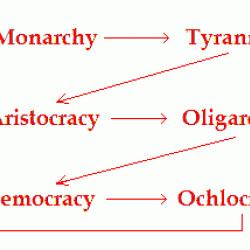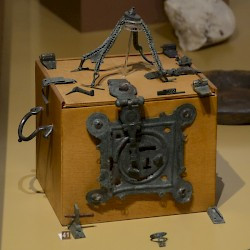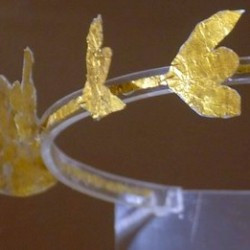Jona Lendering
Jona Lendering read history at Leiden University (MA 1993), specialized in Mediterranean culture at the Amsterdam Free University (MA 1996), and worked at excavations in Holland (Riethoven) and Greece (Halos). After teaching historical theory and ancient history at the Free University for several years, he was one of the founders of a school for history teaching, Livius Onderwijs. Born in Amsterdam, it has now spread to auxiliary locations in Bussum, Dronten, Gouda, Haarlem, Hoorn, Schagen, Zaanstad, and Zoetermeer. As of 2013, Livius Onderwijs has eight teachers, about 500-600 students a year, and offers tours to countries like Italy, Turkey, Iran, and Lebanon. The field trips help to etch into the students' minds some of what they've learned at the school.
Because history is for a large part telling a story, something you do best in your own language, Lendering prefers to publish in Dutch journals. However, he has contributed to the Bryn Mawr Classical Review and Ancient Warfare, while he is the founder of Ancient History Magazine. He is also the publisher and editor of the on-line publication of the Babylonian Chronicles of the Hellenistic Period, a set of important cuneiform sources for the history of the Seleucid and Parthian Near East, transcribed, translated and commented on by Bert van der Spek of the Free University Amsterdam and Irving Finkel of the British Museum. A publication as book is in preparation.
Lendering has written several books and maintains a blog in Dutch. He is the author of several books, including Edge of Empire and Consensus and Crises. For the Livius website, which has received several awards, he collaborates closely with Bill Thayer of LacusCurtius. Lendering is also the webmaster of two daily blogs, the MainzerBeobachter.com and Grondslagen.net.
There are 9380 items in Jona Lendering:
Amyrtaeus
Amyrtaeus: only pharaoh of the twenty-eighth dynasty, revolted against the Persians in 404. He was still establishing his power when he died in 398.Context …An Achaemenid Royal Inscription from Hamadan
Achaemenid Royal Inscriptions: collection of Old Persian cuneiform texts from the sixth, fifth, and fourth centuries BCE, left by the Achaemenid kings on their official monuments.An inscription on a column base from Ecbatana …An Amulet with the Name of Darius
Achaemenid Royal Inscriptions: collection of Old Persian cuneiform texts from the sixth, fifth, and fourth centuries BCE, left by the Achaemenid kings on their official monuments.An Amulet with the Name of Darius …An Anonymous Prophet
Messiah (mâšîah, "the anointed one"): Jewish religious concept, a future savior who will, in some sense, come to restore Israel. The nature of both the Messiah and the restoration was a matter of debate, and there were several claimants.An unnamed prophet (c.59 CE) Source: Flavius Josephus,…

Polybius' theory of anacyclosis |
Anahita
Anahita, also known as Anaitis (Greek: Ἀναῖτις) and Anahit (Armenian): Iranian water goddess. Anahita with ring and jar (Taq-e Bostan) Anahita was…Ananeosis
Ananeosis (Greek Ἀνανέωσις, "renewal" or "rebirth"): the reorganizing of the Cyrenaica during the reign of the Byzantine emperor Justinian. Qasr Libya,…Anastasius I
Anastasius I: emperor of the East-Roman (Byzantine) empire (491-518). Anastasius I Names: c.431: Flavius Anastasius 11 April 491: Augustus Anastasius 1 July 518: natural death Successor…Anaxagoras
AnaxagorasAncyra (Ankara)
Ancyra (Greek Ἄνκυρα): town in central Anatolia, capital of Galatia (modern Ankara). The citadel of Ankara, with walls from all ages Iron…

Ancyra, Balgat Tomb, box |

Ancyra, Balgat Tomb, wreath |